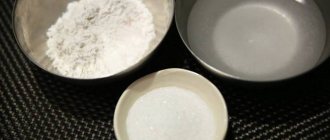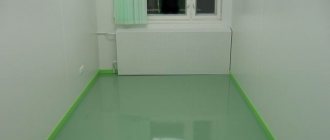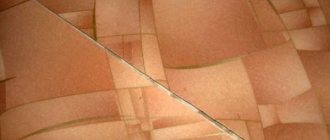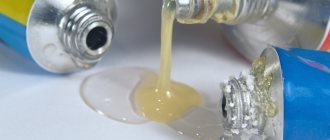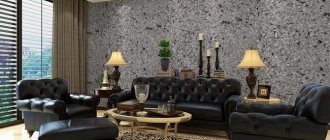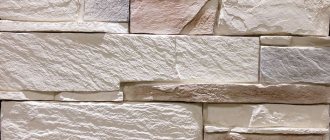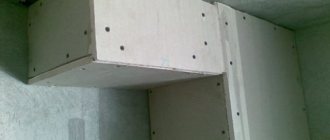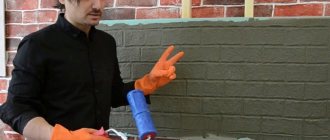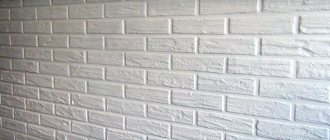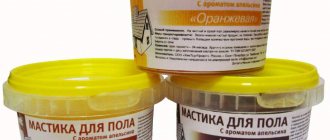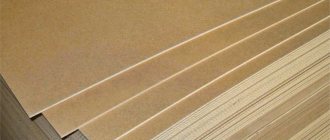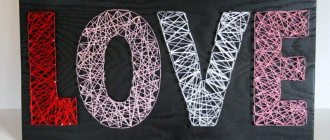Working with radio and electrical parts may require gluing individual elements. Any adhesive solution will not be able to cope with the task; such a process requires heat-conducting glue, and the properties depend on the brand of the composition, so the choice must be made based on the required characteristics and operating conditions of the item. The features of thermal conductive adhesive will be discussed in more detail below.
How to use?
First of all, it is necessary to clean and degrease the surfaces on which the heat-conducting adhesive will be applied. This can be done using acetone, gasoline or alcohol. Next, an adhesive solution is applied to the prepared surface at the rate of no more than 1 ml of substance per 1 square centimeter. The parts are fixed and pressed for approximately 20-25 minutes. After this, some time is needed, namely 24 hours, to ensure strong adhesion of the elements. After a day, the item treated with glue can be used.
It is simply irreplaceable in cases where it is not possible to use heat-resistant pastes and substrates. You can buy it at virtually any radiator store, but if there is not one nearby, you can make heat-conducting glue with your own hands. This, of course, is not so simple, but it is quite possible.
Safety rules for making slime
Boric acid salt (borax) is sold in pharmacies without a prescription. It is generally safe, but with prolonged contact with the skin it causes irritation, burns, allergies, especially if there are scratches and inflammation on the hands.
If borax accidentally gets into the mouth, eyes, nose, bronchi, it will cause a burn to the mucous membranes. PVA glue is low-toxic, considered safe, and has good polymer properties, but if you make slime indoors, you can be poisoned by the fumes.
When preparing slime, use rubber gloves and a mask (if working with powders). When making or playing with ready-made slime, you must not:
- inhale, taste the ingredients;
- rub your eyes with dirty hands;
- press the slime to your face and lick it;
- play with it for a long time with bare hands;
- use slime that has dirt stuck to it.
Important! Before making slime, you need to make sure that family members are not allergic to its components. It is not advisable for children under 6-7 years of age to play with slime, because at this age children taste everything, glue and borax can cause poisoning
They are also not allowed to make slimes on their own, only with the help of adults
It is not advisable for children under 6-7 years old to play with slime, because at this age children taste everything, glue and borax can cause poisoning. They are also not allowed to make slimes on their own, only with the help of adults.
Thermally conductive adhesive "Radial"
This glue is the most popular among adhesives with a thermal conductive function. This is due to a number of undoubted advantages of the solution. Firstly, the glue is resistant to factors such as exposure to sunlight, changes in external natural conditions, and high air humidity (moisture- and water-resistant). Secondly, the adhesive solution has a high viscosity and provides a high degree of adhesion to materials such as glass, plastic, ceramics and even metal. Thirdly, Radial glue is very strong (tear strength 2.3 MPa or more). Plus, by using this adhesive, you don't have to worry about rust on your aluminum, steel, and silver parts.
The glue has high thermal conductivity and is resistant to truly enormous temperature changes. Its working area ranges from -60 to 300 degrees Celsius!
Glue selection
Which glue is better to use, what are the selection criteria? If you need to firmly glue metal to rubber, you should look for a product with enhanced adhesion that gives a reliable seam, while being elastic
It is also important to consider a number of factors:
- humidity and temperature in the rooms where gluing will be done and then the product will be used;
- load on the bonded surfaces;
- the need for high aesthetic properties of the finished product;
- the degree of chemical aggressiveness of the glue, taking into account the type of metal.
When purchasing, it is important to clarify in the instructions or on the packaging that the manufacturer guarantees the suitability of the composition for rubber and metals and alloys. Universal means are not always suitable for such a complex joint, as well as for joining other dissimilar materials. After drying, the seam should not peel off from the base, must be heat-resistant and not change strength when exposed to low temperatures
After drying, the seam should not peel off from the base, must be heat-resistant and not change strength when exposed to low temperatures.
For cars, it is often recommended to buy products such as “liquid rubber”. They can perfectly glue rubber surfaces, as if becoming part of them, and therefore are outwardly invisible. The water resistance of the glue is another important point when choosing; this property is required by almost every user, especially the car owner. If necessary, you can buy glue that will allow you to use the parts even under water.
When joining rubber and metal, it is important to prevent corrosion, therefore high-quality glue always has a mark on the safety of the composition. A separate type of adhesives are considered to be products for silicone rubber, which is soft and pliable. On the tube of such glue there is an inscription “for elastic materials”
On the tube of such glue there is an inscription “for elastic materials”.
The best brands for gluing
How to glue metal or other complex materials to rubber? For this purpose, you should purchase only proven formulations:
- 88CA. Resin glue based on organic solvents, contains phenol-formaldehyde resin, nefras, ethyl acetate. It fits perfectly both on painted materials and on concrete, glass, wood, and is suitable for dissimilar substrates. The composition is waterproof, does not peel off from moisture, and does not produce toxic fumes after drying. Does not interact with metal and therefore does not provoke corrosion.
- U425-3. The properties are similar to the product described above, since it has a similar composition. Used for gluing followed by vulcanization if required.
- 4NB-UV. The glue is oil-resistant, waterproof, but can withstand heating only up to +60 degrees, while it is frost-resistant - it is not damaged by freezing down to -40 degrees. They can be used to glue rubber, rubber-fabric materials, and metal. This composition forms a very elastic seam and has residual stickiness. It is ideal for repairing various rubber products, boats, and chemical protection suits.
- Radical. This glue can even serve in sea water; it is not destroyed by the action of salts and alkalis, which is why it is popular among fishermen (used for repairing any boats).
- The moment is rubber. Suitable for hard and foam rubber, provides high strength, resistance to water and oils, and elasticity of the adhesive seam.
Also, for complex surfaces, adhesives such as Super-NN, Rogneda, Loctite Super Fast are often used. Some users make their own rubber adhesives to save money. To do this, soft rubber is crushed and filled with aviation gasoline to completely cover the mass. After 2-3 days, the liquid is filtered. After standing in a warm place for another couple of days, the glue will be ready.
Composition for ferrites
What are ferrites? These are chemical compounds that have some magnetic properties, due to which they are widely used as magnetic elements in radio transmitting and receiving devices, as well as automatic systems and computer technology. They are used to make antennas, memory parts, electromagnetic wave absorbers, as well as cores, permanent magnets and other parts. Given their wide range of applications, heat-conducting adhesive was created for them as well. Such solutions usually contain dimethacrylate or epoxy substances.
Terms of use
Any heat-conducting adhesive has its own rules of use, which you must know and apply in your work. So how do you use heat conductive glue? To do this you need:
- surfaces that will stick together must be thoroughly degreased using acetone, alcohol or gasoline;
- apply a small amount of adhesive to the surface;
- press the parts to be glued for about 25 minutes;
- Leave the parts at rest for about a day.
After 24 hours, the treated item can be used for its intended purpose. Thus, heat-conducting glue is simply necessary when working with radio and computer equipment. It is especially needed where it is not possible to use thermal paste: when installing radiators and other working parts. Given the high tensile strength, such adhesives are often used to fasten parts in a vertical position or on their side
But in order for the composition to show all its consumer properties, it is very important to strictly adhere to the instructions for use
Cooking methods
Some formulations are prepared by simply mixing the ingredients. Others require heating, cooking or long-term aging of substances to dissolve in each other. In any case, it is important to strictly observe the proportions of the components, otherwise the finished homemade glue may not be of good enough quality.
Wallpaper glue made from flour
Of course, buying ready-made wallpaper glue is much easier. But sometimes it happens that it ends at the wrong moment, and it is quite possible to re-glue the material with a paste of your own making. The same composition is suitable for working with papier-mâché. The recipe is:
- Take a container and heat a liter of water in it until it boils;
- Dilute 6 tablespoons of flour in a small amount of cold water to obtain a homogeneous mass without lumps;
- Carefully pour the flour mixture into the boiling water in a stream;
- Stirring continuously, let the mixture boil;
- Cool the glue until it reaches the consistency of jelly.
You can start gluing the wallpaper immediately after the product has completely cooled. This amount is enough for 2 rolls of canvas. The glue is best suited for simple paper, lightweight non-woven wallpaper on a paper base. For vinyl and other heavy materials, it is better to buy ready-made glue.
PVA at home
Domestic PVA and imported Elmers are water-based products containing polyvinyl acetate and plasticizers. Depending on the purpose (office, household, universal, construction), other substances can be added to the PVA composition. The product has a white or beige color and is distinguished by its ability to freeze and defrost without loss of quality. Using PVA in diluted form you can prime walls, and in its pure form it is used for gluing heavy wallpaper.
You can make PVA using this method:
- soak 5 g of photographic gelatin in a small amount of water for a day;
- after 24 hours, take a metal bowl, pour in a liter of distilled water, and place in a water bath;
- Separately dilute 100 g of wheat flour with cold water, pour the flour mixture into the water, stirring regularly;
- send soaked and stirred gelatin there;
- bring the mixture to a boil in a water bath, but do not allow it to boil;
- As the mass reaches the consistency of thick sour cream, remove it from the heat;
- pour in 4 g of glycerin, 20 ml of alcohol;
- mix well again;
- You can use the product only after it has completely cooled down.
If necessary, glue that is too thick can be diluted with cool distilled water and mixed thoroughly. The finished composition should be stored in convenient jars, under a lid, at a temperature of +10...+15 degrees for up to six months.
Epoxy adhesive
It cannot be prepared from improvised means. In any case, you will need liquid epoxy resin and a hardener, which must be mixed together in certain proportions. Epoxy is a transparent composition that is sold immediately with a hardener. As mixing proceeds, the polymerization reaction begins, before the end of which it is necessary to apply the composition to the desired surface. Due to its reliability and excellent adhesion, epoxy adhesive is most often used:
- in shoe production, repair;
- for gluing plexiglass, plastic, woodwork;
- metal connections;
- filling of various products;
- in electrical engineering.
Typically, 4 parts of hardener require 6-8 parts of resin; more precise recommendations are always indicated in the instructions. After combining the material, it is used immediately or heated slightly by placing the container in hot water. Then use the product to repair various products. It glues the most durable ettrol-based plastics, PVC, glass and metal products.
Rubber glue
This product is used for gluing rubber products. Some people try to do it this way: they cut up pieces of an old car tire and fill them with gasoline. In fact, cross-linked tire rubber does not dissolve well in gasoline and other organic solvents because it contains sulfur. Therefore, the ideal option is to take raw rubber, which is used in tire repair with further vulcanization. Gasoline should also not be ordinary, but aviation grade, then the glue will be of excellent quality.
The procedure for creating a tool is as follows:
- finely crumble the rubber into a glass jar;
- pour a small amount of gasoline into it so that all the crumbs are covered;
- after swelling and dissolving (from 15 minutes to 1-2 days), add gasoline until the glue reaches the desired consistency so that it is not too thick or sticky;
- Store glue in a dark, cool place.
Instead of raw rubber, black soles of old shoes are suitable as filler. It is only important that they are made of TEP (thermoplastic elastomer), which is used for the production of so-called molded shoes.
Wood glue
This adhesive composition is used to fasten wooden products. It can also be used for gluing paper, cardboard, fabric, and a number of other materials. Its downside is that after long-term storage it will begin to gelatinize, become moldy, and become covered with a hard crust. The finished product does not have a very pleasant smell, which is also its disadvantage.
Wood glue is a gelatinous mass, quite dense in consistency. Pieces are cut from it, which are heated and used for gluing parts. It is important to heat the mixture over low heat to prevent it from boiling. There are several options for making the product. For any of them, you need to purchase dry wood glue, which is sold in the form of granules or yellowish tiles. It is prepared from tannery waste, bone meal, animal horns or fish remains.
Popular cooking recipe:
- Grind the glue tile, you can break it with a hammer. Fill with water and leave until it swells.
- Place the mixture in a tin can or other container and place in a water bath. Heat while stirring constantly with a wooden stick. Do not allow the mass to burn!
- After thickening, remove the composition from the heat, add 950 g of vodka for every 720 g of mass. Also add 12 g of powdered alum per 100 g of finished glue.
This product has water-repellent properties and gives the glued products high strength. Wood glue is also made according to a different recipe:
- pour 1 kg of glue granules into a container;
- add water, leave until it swells (usually 1 liter is enough);
- after the product acquires the texture of jellied meat, place the container in a water bath;
- bring the mass to a liquid state, without letting it burn, stirring constantly;
- add 1 liter of vinegar (9%) to the mixture removed from the heat, stir, and the glue is ready.
You can also dilute the glue with water 1:1, then add the same amount of glycerin as dry glue powder was taken. Then you need to heat the mass in a water bath until the liquid evaporates. Afterwards you can immediately use the glue. For storage, it is dried, and before use it is simply allowed to swell in water.
Casein glue
Casein is a complex protein that is obtained from caseinogen during the curdling process of milk. Casein glue is used for gluing leather, wood products, paper, and cardboard. To make such a substance, you need to isolate casein from cottage cheese by defatting:
- pour cottage cheese with water (1 l) with soda (2 spoons);
- leave for 20 minutes;
- rinse the cottage cheese from the tap, let the water drain, and dry the product;
- let the mixture harden, then grind it to a powder.
Dry casein can be used to make glue. Place the powder (100 g) on the fire in a saucepan, add 200 ml of water in a thin stream. The heated mass should become thick and homogeneous, for which it must be mixed very thoroughly. If necessary, the product can be well broken up with a blender. After the glue has cooled, it is possible to connect different products. It is advisable to make small portions, because it does not last long - up to 3 hours, then it hardens.
Dextrin paper glue
Dextrin glue is well suited for cardboard and paper, which is why it is widely used in handicrafts, children's art, origami and quilling. Instead of store-bought dextrin, regular starch is quite suitable. It is placed in a container made of heat-resistant material and put in the oven for 1.5 hours (at +160 degrees). After it is split and converted into dextrin, glue can be prepared:
- take 3 tablespoons of dextrin;
- add 5 tablespoons of water;
- heat until the powder dissolves;
- add 1 spoon of glycerin;
- the glue is ready.
Thermally conductive glue
Similar products are sold in radio parts stores. You can also make thermally conductive glue yourself. You need to take glycerin, heat it to a temperature of +200 degrees to evaporate the water. In the oven, heat the zinc oxide to maximum temperature. Combine both ingredients equally, mix and cool. Glue should be used to connect quickly heating parts where it is not possible to use another type of fastening.
Glue for gold leaf
Potal is an alloy containing precious metals in the form of thin sheets. They are used for gilding and silvering ceramics, stucco, metal, wood or glass. Typically, adhesives based on alcohol, oil, acrylic or water are used to process products. You can replace them with a homemade composition:
- combine 100 ml of heavy cream and cognac;
- apply the product to the surface to be treated;
- After 30 minutes, start gilding.
You can also use a different recipe. Dissolve 70 g of sugar in 200 ml of warm water and let it boil. Pour in 1 teaspoon of vinegar essence, cook for 30 seconds. Remove from heat, add 1/3 cup starch. The consistency of the product should resemble sour cream. When the glue has cooled, you can use it for gilding. After hardening it will become transparent.
Old linoleum and acetone for glue
The finished product from these components can be used for gluing ceiling blocks, PVC products, and glass. It is enough to find scraps of old linoleum and chop them into small pieces. Afterwards, the linoleum is poured with acetone, and the latter should be 2 times more.
The jar with the future adhesive composition must be tightly closed. Store it in the dark for 12 hours. During this period, the linoleum will dissolve in acetone, and the glue will be ready. It can be immediately used for the above materials, as well as for gluing leather, wood, and ceramics.
Making hot glue
Hot glue is useful for fastening wooden surfaces and repairing products made of chipboard and fiberboard. To make it you need to take 35 g of drying oil, 100 g of ready-made wood glue. The latter must be heated in a water bath until it becomes liquid, then add drying oil. The product can be used immediately, including for laying tiles.
Silicate glue
It is difficult to make silicate glue at home. It is prepared by combining quartz sand, potassium or sodium silicate, and at a constantly high temperature. The production of the substance is available only in industrial conditions; it is less often done by builders, again with the availability of equipment.
Edible glue
The so-called food glue is used to decorate cakes - attaching figures and other heavy decor to their surface. There are 2 options for preparing glue:
- Mix 4 tablespoons of starch, 1 glass of cold water. Boil thick jelly, cool to form a viscous mass.
- Take 250 g of sugar, 100 ml of water. Make caramel that has sticky properties.
Review of popular brands
When choosing a suitable thermal conductive solution, it is recommended to familiarize yourself with the most popular brands. Products from top manufacturers are valued for their high quality and strong connection of components.
Manufacturers produce several types of thermally conductive adhesives under different brands, including natural and synthetic ones. The latter additionally contain plasticizers, which makes them resistant to moisture and frost. Both types of solutions are used for installation work with metal, ceramic and glass products. The difference between natural and synthetic solutions is the quality of the composition and the final cost.
"Radial"
Radial brand adhesive solution is suitable for mounting LEDs and heat dissipation fittings to transistors and processors in situations where it is not possible to apply thermal conductive paste.
When applied, Radial glue provides stable and high-quality heat removal without losing its characteristics at a temperature range from -60 to +300 degrees. A distinctive feature of the products of this brand is their slow drying, which allows them to retain their plasticity for a long time after being squeezed out of the tube.
"AlSil"
Hot-melt adhesive "AlSil" is a modern composition for screwless installation of radiators, cooling systems and other structures where heat removal is required. Glue is often used on memory boards in laptops and system units.
The composition is supplied in a syringe weighing about 3 g, which makes it convenient to apply to a work surface. The AlSil solution is economical in consumption, since it can be applied in a thin layer from a syringe.
GD9980
Thermally conductive composition GD9980 is used to displace accumulated air between the surface of the chip and the base of the radiator. The heat dissipation property of this brand of glue is less compared to products from other manufacturers, but the GD9980 composition is capable of particularly firmly fixing parts on the processor, attaching radiators to motherboards, RAM slots and video card chips.
Description and purpose
Polyurethane is the basis of a product intended for fixing polystyrene foam boards. Using adhesive foam, the insulation boards are fixed to the internal and external walls of the house. No special skills are required to carry out installation work. A non-specialist can work with the construction product.
The composition of the adhesive foam includes additives that increase adhesion; it is several times higher than that of classic polyurethane foam. Scope of application of adhesive foam from:
- glue brick blocks;
- fasten facing slabs of stone and wood;
- fix plasterboard slabs;
- glue window sills indoors and outdoors;
- fix heat-insulating materials to the façade and foundation.
Adhesive foam is a new product. It was specially developed for gluing polystyrene and foam boards. Previously, products with cement binders were used for this purpose. Aerosol polyurethane foam is used for gluing different materials:
- cardboard;
- plywood;
- GVL;
- chipboard;
- drywall;
When using construction foam, work efficiency increases. Operation of the product does not require additional equipment, water consumption, or electricity costs. There is no dirt or dust at the work site.
How to make glue for different occasions in repair life
The collective name “PVA glue” applies to a wide range of adhesive compositions, whose recipes and purposes are very different from each other. Their purpose can be judged by their letter markings - the scope of application must be clearly indicated on the packaging and in the technical documentation:
- PVA-K is a common composition for office supplies. A flowing liquid is white (shades of yellow are allowed), without lumps, a film may form on the surface of the tube. PVA-K cannot withstand exposure to water at all; glued surfaces delaminate even in slight frost. Due to savings on plasticizers, this variety is inexpensive, but is limited specifically to the office area of application - gluing sheets of paper and thin cardboard up to A4 format;
- PVA-B or PVA-O – household (wallpaper) glue, an improved modification of stationery glue. It tolerates moisture well; surfaces covered with it can be repeatedly defrosted and frozen to temperatures of – 35 ˚C…– 40 ˚C. It is used for gluing concrete, wooden, putty and plastered surfaces with wallpaper with a paper “backing”, with the exception of heavy rolls - for such it is better to use liquid nails or special compounds from the manufacturer;
- PVA-MB is a universal adhesive formulation, compatible with both paper products and fabric, leather, wood, metal and glass. Thick liquid without lumps, frost-resistant after application down to – 20 ˚C;
- PVA-M – improved universal glue (super-PVA). Frost-resistant down to – 40 ˚C, strength and moisture resistance allow you to glue not only any wallpaper, but also facing tiles and linoleum to PVA-M (except for rooms with constantly high humidity);
- PVA dispersion is a low-water base for any polyvinyl acetate emulsion. It consists of polymer and colloidal components, from which other types of PVA glue are made by adding water. It is distinguished by high-speed gluing; when tested, fingers stick to each other almost instantly. It is used very widely - as an additive to plaster solutions, in the printing industry, footwear and leather industries, in the production of textiles, etc.
In the photo - cans of PVA glue, vopros-remont.ru
Photo of how to make PVA glue, vproizvodstvo.ru
In the photo - PVA glue from the store, a-kak-sdelat.blogspot.com
Photos of work on the production of PVA glue, libo.ru
In the photo - making PVA glue at home, remontset.ru
How to apply thermal conductive glue?
The process of installing diodes using glue consists of several stages:
- Degrease all surfaces you will be working with using alcohol or acetone.
- Apply a small amount of thermal conductive glue to the surface of the part to be cooled.
- Using force, press the cooled part to the surface and try to make forward circular movements to evenly distribute the glue over the entire surface of the cooled part on the radiator.
- Fix the pressing for 3-4 minutes for better adhesion.
- Let the mixture dry. The glue hardens within 20 minutes, but complete drying occurs only after 24 hours.
PVA glue at home
PVA consists of water and polyvinyl acetate, plasticizers are also added. PVA comes in different types, and accordingly it is used for different jobs; to impart certain properties, other components are added. It comes in white or beige. Can be used as a primer or wallpaper adhesive.
How to make PVA glue:
- Take photographic gelatin, five grams is enough, soak it and leave it like that for a day, you don’t need to pour a lot of water.
- After a day, distilled water (1 liter) is poured into a metal container and placed in a water bath.
- In a separate container, one hundred grams of wheat flour is diluted in water (the water should be cold), then the composition is added to the container with heating water.
- While mixing the ingredients together, add gelatin.
- Keep the container on the fire until it boils; it is important that the liquid should not boil.
- When the liquid solution begins to thicken (the consistency is similar to thick sour cream), you can remove it from the stove.
- Add four grams of glycerin and 20 milliliters of alcohol.
- Everything is thoroughly mixed; you can use homemade PVA when it has cooled down.
If the glue turns out to be too thick, you can dilute it with distilled water. The product is stored in a closed container for 6 months, subject to a temperature range of +10 to +15 degrees.
If the glue turns out to be too thick, you can dilute it with distilled water.
Decoration with glue
Transparent or colored hot melt adhesive with your own hands can be turned not only into a fastening composition, but also into a decoration element. Simple and inconspicuous glass vases, treated on the outside with a hot-melt adhesive pattern, will sparkle with new colors and will impress your guests as an original work of your own.
In the same way, you can draw three-dimensional figures and entire pictures on any household containers, boxes, or simply on cardboard for a frame on the wall. Not any paint is suitable for coloring colorless glue - watercolor or gouache will quickly be erased from the surface. It is best to use acrylic-based paints or, as a last resort, nail polish.
DIY hot glue crafts are a great way to spend time with children, teaching them accuracy, responsibility and artistic flair. The main thing is not to leave children alone with the device turned on or just warmed up.
DIY pistol
The market is now flooded with tools that are not of the best quality, and heat guns are no exception. They usually break at the most inopportune moment, and you may need a reliable device to use the remaining hot melt adhesive.
You can quickly build a heater for work from an old iron or use a soldering iron, but here you may encounter the problem of overheating the material. For constant work, craftsmen will be more inspired by the idea of making a hot-melt glue gun with their own hands.
Types of glue
Depending on the scope of application, heat-resistant adhesive is available in the form of universal formulations and specialized materials. Universal mixtures have average performance indicators.
Highly Directional Adhesive:
- Heat-resistant adhesive for metal. Withstands heating up to 1250˚C. It is used for point connections of metal elements, as well as metal with stone, ceramics, glass, brick.
- Fireproof adhesive for stoves and fireplaces. Used for masonry structures and finishing works. It has the highest degree of heat resistance - more than 1300˚C and is not destroyed under the influence of open fire.
- Glass glue. This solution is mainly used for repairing household appliances with glass panels (ovens, microwave ovens, convection ovens).
- Heat-resistant adhesive for ceramics. This adhesive material is used for finishing stove and fireplace facades with tiles.
Depending on the composition, heat-resistant adhesives can be produced on the basis of:
- Epoxides. Such materials are produced in the form of two-component mixtures. They have the greatest adhesion to difficult surfaces (glass, ceramics, wood, plastic, steel, aluminum).
- Silicone. Used to connect materials in contact with food. In addition, silicone compounds have insulating properties and can be used as a sealant. They are sold in the form of syringes for mounting guns.
- Rubber. These substances are used to work with rubber elements and do not have ultra-high heat resistance (up to 120˚C). The low heating threshold is due to the temperature stability characteristics of rubber parts.
- Silicates. Silicate heat-resistant composition is used for repairing and sealing cracks in brick and stone masonry of chimneys.
Features of the composition of superglue
The molecular formula is the same for all cyanoacrylate adhesives: CH2 = C(CN)COOR. This is a liquid cyanoacrylate monomer, or cyanoacrylic acid ester. R is a radical, it can be ethyl, methyl, butyl and other monovalent radicals, depending on which the technical characteristics of the glue change. Any superglue contains up to 97-99% cyanoacrylate, as well as the following substances:
- plasticizers – give superglue elasticity;
- stabilizers - keep the glue quite liquid before application and provide the necessary properties after hardening;
- thickeners – provide the necessary thickness and consistency of the gel;
- modifiers - necessary to enhance the water resistance of superglue to the level of D3-D4, heat resistance (divinylbenzene, cyclopentadiene and others);
- adhesion enhancers – increase the adhesion strength of glue (PVA, polyacrylic);
- curing activators (needed when there is insufficient humidity) or curing inhibitors (to prevent spontaneous polymerization);
- fine metal powders - to improve the conduction of electricity.
Unlike other adhesives, superglues do not contain organic solvents. This makes them safer for humans and also suitable for gluing metal. On sale you can find different types of superglues, which are supplied in the form of blisters, tubes, jars, and adhesive tapes. They have a common feature: a small volume of packaging, because after opening it, even with a slight decrease in the tightness, the gel glue quickly becomes viscous and then completely deteriorates.
General rules of application
The surfaces to be bonded are cleaned before applying the adhesive foam. Remove dust, bitumen, grease, dirt. Work only with dry foam concrete blocks.
Ultraviolet radiation affects the properties of the glue, so after hardening it is covered with a protective layer, and a layer is applied on top:
- gypsum;
- paints;
- sealant.
Masonry
Macroflex adhesive foam is used to bind the partition wall blocks. The product is not intended for load-bearing walls. Masonry is made in regular shaped blocks of the same size. Deviations in dimensions should not exceed 1 mm. You cannot use foam if the blocks have voids. The base for the first row is leveled. It should be smooth, strictly horizontal. Control using a building level. Adhesive foam is applied to the ends of the block (vertical, horizontal) in strips, retreating 3-5 cm from the edge. The unsuccessfully placed element must be removed within 1 minute.
During work, take 3 minutes as a guideline; this is the time during which several operations need to be performed:
- apply glue to all surfaces of the block;
- install it in place;
- lightly tap the block from above to align it in a horizontal plane;
- Check the level for horizontalness.
A wall built using Macroflex adhesive foam can be plastered after 2 hours.
Gypsum panels
First prepare the surface of the wall (ceiling). Remove remnants of previous finishing, wallpaper, paint. Prime if the surface quickly absorbs moisture, then proceed to the main work:
- place the panel on a flat surface;
- retreat from the horizontal edge 5 cm;
- squeeze out the first strip of Macroflex adhesive foam, leading it parallel to the edge;
- Apply subsequent strips in increments of 15 cm, maintaining parallelism;
- Place the last strip 5 cm from the edge.
To quickly and efficiently apply adhesive foam, it is worth purchasing a specialized (professional) gun model. When installing a gypsum panel you need:
- apply glue;
- install the panel in 3 minutes;
- press the panel against the main surface, adjusting its position;
- hold for 5 minutes until the foam holds the materials together.
After just 2 hours, you can begin the next stage of work.
Window sills
Clean the surface of the window opening. Dirt and oil stains impair adhesion. You can remove them with white spirit. Squeeze foam glue onto the prepared window sill. Apply it in parallel stripes. For strong fixation, 2-3 extruded tapes are enough.
Stair steps
When attaching steps to wooden spacers, glue strips are applied parallel to the edge. For a narrow step, 2 spacers are enough. For a wide one, 3 are required, 2 on the edges, one in the middle. When applying glue between the strips, maintain a standard distance of 10-15 cm. Within 3 minutes, set the step in place, level it, and press it. To prevent it from rising upward, place a load weighing at least 10 kg on it. It is removed after 60 minutes.
Which food glue to buy - English or Chinese from aliexpress?
On sale you can find products made in Russia and abroad, but professional confectioners in their work prefer edible glue from the UK.
Here are the most popular brands:
Magic Colors is a transparent cooking glue based on natural plant ingredients. Completely ready to use, liquid but at the same time dense adhesive with excellent adhesion. Used for making sugar flowers (attaching petals from mastic plates), gluing marzipan figures to the cake. Magic Colors edible glue is also suitable for modeling. Sold in plastic packages weighing 32 grams.
Rainbow edible glue is an edible glue based on carboxymethylcellulose, intended for gluing and fixing decorative parts on the surface of confectionery products (cakes, designer pastries, etc.). The glue does not cause allergic reactions and is suitable for vegetarians because it does not contain any animal products. Available glue containers are 25 and 50 ml. Made in Great Britain.
QFC Essentials Edible Glue is a colorless "sugar" glue. Ideal for making flowers and models from mastic, works well with ready-made confectionery decors. The high adhesive ability of QFC Essentials allows you to hold even heavy elements - it is enough to fix the glued product for a while for the composition to set. Does not contain animal ingredients, suitable for vegetarians.
Carboxy Methyl Cellulose (Carboxymethylcellulose, CMC) is a white, odorless and tasteless fibrous powder. Used as a thickener and stabilizer. Also suitable for preparing edible glue for confectionery production. All you need to do is dissolve the powder in water and stir well.
English or Chinese from aliexpress? CMC produced in the UK is more often found in specialized stores, but this functional powder can also be purchased on aliexpress.
According to experts, the Chinese Carboxy Methyl Cellulose differs little in its characteristics from the British one. Unless the Chinese product becomes thicker and less elastic when diluted. The compositions taste absolutely identical.
Recipe - how to make food glue for mastic at home
Making homemade pastry glue couldn't be easier.
- To do this, you need to dilute Carboxy Methyl Cellulose in water in a ratio of 1 to 30 (for 30 grams of water - 1 gram of powder). For gluing light elements, it is recommended to use a smaller amount of CMC (a proportion of 1 to 40 is sufficient).
- The powder is poured into a small plastic bottle with a tight-fitting lid, filled with an appropriate amount of water at room temperature and mixed thoroughly using long-term (2-3 minutes) shaking.
- At first, lumps of the substance will be visible in the composition, but after 10-15 hours they will finally dissolve and the solution will acquire a uniform consistency. If the glue turns out to be too thick, you can dilute it with water, mix and let sit for a while.
VIDEO INSTRUCTION
https://youtube.com/watch?v=HSLh33CyyHA
CMC is also added to confectionery paste to model figures.
- This must be done while rolling.
- Add carboxymethylcellulose in small portions and mix thoroughly.
- For 300-350 grams of edible mastic, one teaspoon of thickener is enough. CMC gives the material elasticity and increases the strength of the finished product.
- To make the mass more viscous and plastic, it is recommended to soak it for 1.5-2 hours before starting modeling.
Carboxy Methyl Cellulose produced in the UK has a slight whitening effect - it gives mastic products a snow-white hue.
Can food glue be harmful?
Carboxymethylcellulose (food additive E466), based on the results of numerous studies, was approved for use in the Russian Federation.
It is believed that in small doses, CMC does not pose a health threat, but in large quantities, Carboxy Methyl Cellulose can cause stomach upsets (in rare cases, a laxative effect occurs). Overall, the supplement is considered safe.
Scope of application
Heat-resistant glue is in demand everywhere in everyday life. Its wide range of applications makes it a versatile adhesive.
Heat-resistant components are used for:
- Connection and installation of metal elements without traditional welding.
- Installation of a heating system "Warm floor".
- Repair of equipment made of heat-conducting glass.
- As a heat-resistant sealant for filling gaps in chimneys of stoves and fireplaces.
- Cladding works of fireplaces and stoves.
- For laying bricks during the construction of stove structures and tandoors.
When laying the lining and base for furnace structures, different types of heat-resistant adhesive are required. When finishing with tiles, a substance with high thermal conductivity up to 130˚C is used. And when laying open fires, fire-resistant glue is required that can withstand 1350˚C.
- Fixing glass in ovens with electric and gas heating.
- Repair and fastening of car heating elements.
- Fastening plastic and graphite elements.
- Repair of oil radiators and central heating systems.
How to repair a chip on a windshield with your own hands
Chip on the windshield? Do you want to replace glass? Do not hurry! Try Windshield Repair Kit (WRK) and your windshield will last for a long time.
WRK composition:
- tube of special glue – 1 pc.;
- discs with 2-sided tape – 2 pcs.;
- syringe for creating a vacuum – 1 pc.;
- nozzle for supplying glue – 1 pc.;
- knife for scraping tape – 1 pc.;
- polyethylene plates – 2 pcs.
It is advisable to carry out the work in warm and sunny weather.
Condition of the windshield before repair:
Operating procedure:
1) use a thin steel needle to clean the chip from any remaining glass in it, dirt and other debris;
2) use a brush (or an old toothbrush) to sweep away all the remains;
3) we carry out the procedure for degreasing the chip and around it;
4) take one of the disks, remove the tape from one side and attach this side to the windshield, align the hole in the disk with the center of the chip, press the disk and iron it with force over the entire surface;
- 5) remove the tape from the outside of the disk and then tightly install the nozzle for pouring glue into the chip;
- 6) slowly pour glue until it fills the entire chip and 3/4 of the height of the nipple of the nozzle;
7) screw the syringe to the nipple and create a vacuum by lifting the rod and fixing it in the upper position. This removes any remaining air. Repeat the procedure several times within 10 minutes;
9) after another 20 minutes, everything is removed and the nozzle and disk are removed using a knife;
10) if there are any errors, then fill them with glue and put a plastic plate on top and iron them tightly. After 10 minutes, remove the plate, scrape off the remaining glue and be satisfied with the result.
Condition of the windshield after repair:
Have a nice trip!
Safety precautions
To begin with, it is worth mentioning the safety precautions when working with hot-melt adhesive. Many housewives have experienced with their own hands the danger of high temperatures in the kitchen and at home, so you need to remember about safety.
Glue, sticking to the skin, releases a significant amount of heat not only when cooling, but also when hardening. Therefore, it can cause much deeper burns than a hot frying pan or tile, from which you can pull your hand away in time, receiving minimal damage. Additionally, you should carefully read the instructions for the device and follow the recommendations specified by the manufacturer.
If you run out of glue
Let's consider the situation the other way around: there is a useless hot-melt gun without suitable stickers, and you need to stick something “here and now.” We put aside the orphaned tool until we purchase suitable consumables for it and turn our attention to another heating device that is no less versatile in use - a hair dryer.
Of course, hair models would be inappropriate here, meaning a professional construction hair dryer that produces high air temperatures. Here you can heat the glue right at the joint. By the way, the glue itself is literally lying under your feet.
We offer the 2 most common options for making hot-melt adhesive with your own hands:
- Foamed polypropylene or polyethylene can occasionally be found as packaging material, but most often it is found in construction and finishing works as heat and sound insulation. The connection is not so strong as it is flexible, and is not afraid of shocks and vibrations.
- The well-known plastic bottles that fill landfills all over the Earth are also suitable as an adhesive material. It takes quite a long time to heat the entire bottle with a hairdryer, so it is better to cut a plate of the required size at the gluing site.
Both options are unstable at high temperatures, but are suitable for most jobs where the use of conventional hot-melt adhesive is sufficient. This way, you recycle waste and have a virtually inexhaustible supply of glue.
General rules of application
The process of gluing parts directly depends on the composition. Some solutions need to be applied to the entire surface, others - exclusively using a spot method. You also need to check in advance what form the glue is created in - a solution or a mixture. The liquid variety dries out quickly, which can create certain difficulties during use.
The nuances of using a thermally conductive solution depend on the type of surface on which the work is being carried out. When connecting metal elements, you must adhere to a special technique, which involves a point impact on the working surface. An epoxy composition with synthetic plasticizers and additives is suitable for processing metal components. For ceramics, it is better to use a solution containing a combination of cement and sand, since this combination improves the plasticity index. It is recommended to work on a glass surface using glue with organic compounds, which help not to disturb the transparency of the material.
The general procedure for use is to perform simple actions sequentially. Including:
- Pre-degrease the surfaces of the heat source and heat exchanger with alcohol or acetone.
- A small amount of the substance is applied to the prepared surfaces and the parts are fixed with force for 15 minutes.
- The product is left for a day for the solution to dry completely.
- The syringe with the substance is tightly closed after use.
How to mix tile adhesive correctly?
Only at first glance it seems that diluting the glue is as easy as shelling pears.
There are many nuances, failure to comply with which can not only make the glue unusable, but also completely ruin the cladding.
Rules and principles for diluting dry glue
Experienced builders recommend following these rules:
- the mixing container must be clean, the remnants of the previous glue or solution must be scraped off the walls, otherwise they will disturb the composition;
- the water must be clean and match the temperature of the dry mixture and the environment (it will need to be heated or cooled);
- the mixture must be poured into the liquid, and not vice versa, otherwise it will be more difficult to get rid of lumps;
- It is better not to use industrial water due to the presence of impurities that can react with the glue;
- if the cement mortar in the container begins to set, diluting with water will not help, it is better to prepare a new mixture;
- Do not exceed the permissible volume of water, otherwise the solution will turn out liquid and will not hold the tiles.
Advice! If there is any doubt about the consistency of the glue, the mixture should be left for 5-10 minutes. If the texture remains unsatisfactory, you can add a little water or dry powder.
How to mix tile adhesive: choosing a tool
If you have to prepare 10 or less liters of glue, it will be convenient to mix the components using a long rectangular trowel.
This steel spatula with a curved handle can be used by hand, trying to lift dry particles from the bottom so that there are no lumps.
Preparing large volumes of glue by hand is problematic. You will need a drill with a paddle attachment - only it should be designed for mixing the solution, not paint. Experienced craftsmen use a construction mixer with a whisk for this purpose.
The rotation speed of the nozzle should not exceed 300 rpm.
In this case, the blade must be completely immersed in the solution, otherwise bubbles will appear in the texture, deteriorating the quality of the glue.
Step-by-step dilution of glue
Work order:
- Pour water at the desired temperature into a clean, prepared container. According to the instructions, add the dry mixture to the liquid. To begin with, it is better to take ⅔ water, and if the mixture turns out thick, dilute it with the rest of the liquid to the optimal consistency.
- Measure out the required amount of dry mixture planned for the first batch.
- Add the first portion of dry glue, stirring the solution. Add the entire prepared mass in small doses, stirring to achieve a uniform consistency.
- Leave the solution for 10-15 minutes so that the particles are well hydrated.
- Stir again to break up any remaining lumps and separations. The glue is ready for use.
The mixture should be quite thick and elastic. It’s easy to check its quality - just scoop up the glue with a trowel and turn it over. A high-quality solution should not drain or fall off in pieces. During the process of laying tiles, it is recommended to stir the solution periodically so that it maintains its plasticity and does not dry out.
Advice! The longer the glue is mixed and whipped, the more liquid it turns out. The situation can be corrected by adding a small portion of the adhesive mixture.
Glue color classification
Let's take a look at these colored sticks. It can't be that manufacturers are just adding colorings at random. Indeed, there is a recommended international marking and here are the main types of cores for a heat gun:
Simple translucent cylindrical sticks are the most popular type of glue. Universal, used for a wide variety of surfaces and materials, suitable for almost any hidden and open fastenings. Colored opaque rods differ from universal ones only in color. It makes sense to buy them for those who do crafts, children and florists. They allow you to disguise the gluing area to match the overall color of the product without the use of additional coloring. Black and gray stickers are intended for waterproofing areas, and are also used as electrical insulation
The non-shrinking and adhesive properties of the material are used in sealing window frames and insulating current-carrying parts of electrical appliances. White opaque rods are used specifically for gluing metal and glass, except, of course, for universal adhesives painted white, pay attention to the packaging. Yellow or candle-colored, wood-colored translucent sticks have better adhesion to the porous structure of wood or cardboard
In any case, not all manufacturers have yet come to common standards and it is necessary to check the technical properties of the glue by checking the packaging. There you can also find out the melting point of the material and the approximate temperature range of its use.
In electrical appliances, materials that can withstand prolonged heating are often required; in other cases, a non-rigid plastic fixation, such as silicone, may be required, for example, in the manufacture of hand tools. You also need to take into account the capabilities of your device for working with glue, so that the heat gun has enough power to melt the material during operation.
Wax instead of glue
It's time to try the device in action. Of course, you can glue them, but it’s much more interesting to find an original use for it. The principle of the gun is to heat the material and melt it into a liquid state. This means that any material with a suitable melting point can be used in the gun. Thus, wax crayons, when heated in this way, become not just a gel-like mass, like glue tubes, but a liquid, like drinking yogurt.
Using different colors and imagination, you can get motley drops on cardboard or thick paper, and if you drip from a height of half a meter, you will get blots. The gun, of course, can get dirty, and to clean it after artistic practice, you should run a certain amount of factory glue, which will wash away the wax from the inside. Let us remember that wax is a rather greasy material, and not all surfaces will be able to hold it for a long time. The porous structure of wood or cardboard can provide sufficient adhesion.
Requirements for adhesives
Under normal household conditions, joint mixtures are resistant to temperatures of an average of 35–50˚C. Requirements for their operational range of heat-resistant materials from +280 to 1400˚С.
In addition to high thermal loads, heat-resistant adhesive must have the following qualities:
- Increased strength of connecting seams and prevention of corrosion processes.
- High level of adhesion to materials of various densities.
- Resistance to mechanical and static loads. This property is achieved by the presence of quartz chips, cement and plasticizers in the substance.
- Maximum strength is achieved by briefly heating the connecting seam.
- Resistance to moisture, pressure, ultraviolet spectrum.
- Environmentally friendly connections. When heated, the seams should not release toxic elements.
Additional Recipes
Graphite dust is not the only component that can be used to prepare conductive adhesives. There are several more complex mixtures that have better electrical conductivity or adhesive properties:
- A mixture of silver powder (130 g) and graphite (12 g) are conductive components, and the binders are nitrocellulose (8 g), acetone (50 g) and rosin (3 g). In the order listed, everything is mixed in a mortar until smooth and the glue is ready. If the glue thickens, it must be diluted with acetone. This composition is more designed as conductive - you should not expect it to hold any parts like glue.
- Graphite (30 g) and silver (70 g) powder, acetone (70 ml) and vinyl chloride-vinyl acetate (60 g) - after mixing, they become a syrupy conductive liquid with adhesive properties. Store in an airtight container to prevent the acetone from dissipating. Use it to dilute the mixture if it thickens.
- The powder from the graphite rod of the AA battery and the ceponlac are mixed until a creamy mixture is obtained.
Casein glue
Casein type of glue is used to glue paper, cardboard, leather products, as well as for wood. To obtain casein, the cottage cheese is defatted. For this:
- 2 tbsp. spoons of soda are diluted in a liter of water.
- Leave for twenty minutes.
- The cottage cheese is washed, it must then dry.
- The hardened mass is ground to obtain a powder.
This powder will be a component of the glue. Place 100 grams of casein on fire, slowly pour in water (200 ml). Constantly mix the components until a thick mass is obtained. You can work with cold glue. You should not prepare a lot of product at once, because the product can be stored for no more than 3 hours. The hardened product cannot be used. This is the most natural glue.
Casein type of glue is used to glue paper, cardboard, leather products, as well as for wood.
The article described how to make glue at home. These are simple recipes, the ingredients for which are easy to find. You can get cheap but reliable solutions for gluing all kinds of materials. The main thing is to strictly adhere to the recipe, then the connection will be strong and durable.
Name Confusion: Circuit Adhesive
For people involved in circuit design, the words “thermal adhesive” have the same meaning as “hot-melt adhesive for radiators.” It is very difficult to make such a material with your own hands, since it uses chemical reactions, and not a change in the state of aggregation of the substance under the influence of temperature.
It is impossible to compare hot-melt adhesive for a gun and hot-melt adhesive for LEDs, which are different in composition and purpose. You can make the so-called glycerin cement with your own hands from lead litharge and glycerin as a heat-conducting layer and an adhesive at the same time.
There are also proven industrial options for heat-resistant materials for gluing, which, of course, are better to have in stock than to prepare hot-melt glue yourself. "Alsil-5" and "Radial" are the most well-known brands among specialists. In addition, several types of heat-conducting rubber are produced. You should read the instructions about how exactly heat-resistant glue is used.
Making epoxy glue
Epoxy glue cannot be prepared from components that are always available at home; it requires epoxy resin and a hardener. To obtain this glue, these elements are mixed together in compliance with the proportions.
Epoxy is a transparent solution; on sale it is always found complete with a hardener. It serves as a catalyst for polymerization. After the start, you should have time to cover the surface of the products to be glued with the solution before the composition hardens.
The composition reliably and firmly holds objects together and can be used for gluing many materials. Popular applications in the following areas:
- In the shoe industry, for shoe repair;
- For gluing plexiglass, plastic, wood;
- For metal products;
- As a potting material;
- For gluing electrical devices.
Typically, 6-8 parts of resin are added to 4 parts of the hardener, but you should follow the manufacturer’s instructions on the packaging. Copes with the connection of glass, plastic, PVC, metal and other products, creating super strength.
Epoxy glue cannot be prepared from components that are always available at home; it requires epoxy resin and a hardener.
Description and scope of application
Thermally conductive adhesive is designed for use in environments with temperature changes. At high and low temperatures, the created compound does not lose its properties. The solution is indispensable when installing LED components, radiators and other electronics.
Due to the wide spectrum of action of the heat-conducting solution, it can be considered as a universal remedy. It is suitable for use with graphite, metal and plastic elements. Also, high-quality results can be achieved when applying the substance to glass and ceramic surfaces. Providing a strong connection, this type of glue is used in many industries.
Rubber glue: production
Durable adhesive composition
At home, it is also quite possible to prepare glue for working with rubber products. To operate, you will need aviation gasoline and several pieces of high quality soft rubber. They must be finely chopped and then placed in a plastic or glass container, where they are filled with clean gasoline. Leave it like this for several days. Then the resulting solution is carefully drained and placed in a cool place. You should get a homogeneous, fairly thick mass.
The surface intended for gluing must be thoroughly degreased.
Boiler-based glue gun
Now we can be sure that the boiler will not burn without water, but will only heat up to the required temperature. The next step will be to make a comfortable handle so that you don’t get burned on the heated device. The most accessible material for a handle is wood, but it is also sensitive to high temperatures and you can use Teflon tape, used in cooking, to protect it.
As a working container for melting the glue, you need to make a tube and a funnel from a tin can, connecting them together so that the edges of the funnel cover the tube. The diameter of the working crucible should be such that the funnel is tightly clamped by the coils of the boiler. We additionally strengthen the structure with copper wire and test the device on a suitable piece of glue stick. This design compensates for the absence of a feed lever with incredible “omnivorousness”, that is, the tool is suitable for any type of hot-melt adhesive, regardless of its melting point.
